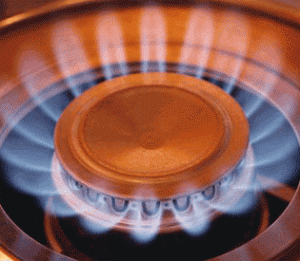 Natural gas fell on Tuesday as weather forecasting models predicted above-average temperatures in central and eastern U.S. during the next few days, easing demand for the power-station fuel. However, the energy source was supported by early withdrawal estimates for last week, which point to a larger-than-average US gas inventories decline.
Natural gas fell on Tuesday as weather forecasting models predicted above-average temperatures in central and eastern U.S. during the next few days, easing demand for the power-station fuel. However, the energy source was supported by early withdrawal estimates for last week, which point to a larger-than-average US gas inventories decline.
On the New York Mercantile Exchange, natural gas for delivery in January declined by 1.87% to trade at $4.199 per mBtu at 13:42 GMT. Daily highs stood at $4.295 per mBtu, while days low was touched at $4.196 per million British thermal units, the weakest level since December 11th. However, the energy source marked a sixth straight weekly advance, adding 6.5% last week, after gaining 16% in the previous five weeks.
The energy source was further pressured by the short-term forecast for a warm-up in the next few days across much of the US. NatGasWeather.com forecast a fairly quiet weather pattern over the next several days across much of the US. There is only one last fast moving weather system, which will track across the Great Lakes region and into New England on Tuesday with a few inches of snow. Otherwise, natural gas demand is expected to ease, as a high pressure formation will dominate over the next few days, providing a nice warm-up across the central and eastern US. However, the warm-up will be brief, as the next cold blast is due to cross into the Northern Rockies Thursday into Friday and to push into the central and eastern US by the weekend. This will increase demand for natural gas in the Midwest and Northeast. Once the cold blast gets established over the northeastern US, it will remain anchored for quite a long period. The western US is expected to remain dry and mild for the foreseeable future, which will offset the upcoming higher demand of the eastern US. Overall, the Midwest and the Northeast will experience reinforcing shots of cold weather until the Christmas holiday and likely into the New Year.
NatGasWeather.com’s extended forecast for the week ending December 30th called for cold and wintry weather over the Midwest and Northeast and mild and dry conditions over the western and southern US, due to a massive high pressure ridge holding strong. The high-consumption states of the Midwest and Northeast are expected to keep withdrawing larger-than-average amounts of natural gas. There is slight probability for very cold temperatures to make it further in the central US. Some very strong winter storms are possible in this pattern, if the jet stream dips over the cold air of the northern US and then mixes with the milder storms of the Southwest, which contain more moisture. If this is the case, the collision of these opposing air masses could lead to very impressive weather systems, which will blow up over the eastern US, greatly impacting many regions.
According to AccuWeather.com, the low in Indianapolis on December 19th will be 38 degrees Fahrenheit, or 15 degrees above average. Readings in Detroit on December 19th will be 32 degrees Fahrenheit, 8 degrees above the average, while the low in Chicago will be 33 degrees Fahrenheit, 11 degrees above normal.
Market players also await this week’s US inventories data, due to be reported by the Energy Information Administration on Thursday. Early withdrawal projections range from 180 billion cubic feet to 229 billion cubic feet, while stockpiles fell by 70 billion cubic feet during the comparable period last year. The five-year average change for the week is a decline of 133 billion cubic feet.
Last Thursday, the Energy Information Administration reported that US gas inventories fell by 81 billion cubic feet in the seven days ended December 6, trailing expectations for an 85 billion decline according to the median estimate of 25 analysts surveyed by Bloomberg. The withdrawal was however well above last year’s 8 billion decline during the comparable period and also exceeded the five-year average drop of 76 billion cubic feet.
Total gas held in U.S. underground storage hubs equaled 3.533 trillion cubic feet as of Friday December 6th. Stockpiles were 273 billion cubic feet, or 7.2%, less compared to the same week a year ago and 109 billion cubic, or 3.0% feet less than the 5-year average of 3.642 trillion cubic feet. The deficit to the average amount widened to 3.0%.





